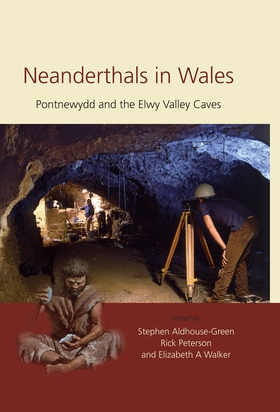
Lägg till önskelistan
Neanderthals in Wales e-bok
Pris
115 kr
The final publication of results of the excavations at Pontnewydd cave in north-east Wales has been eagerly awaited. The site was investigated as part of the Palaeolithic Settlement of Wales Research Programme, which has been responsible for transforming understanding of the nature of human settlement on the very margins of Eurasia by early Neanderthals. The caves of the Elwy valley in north-east Wales contain evidence of the earliest human occupation of Wales. This monograph documents the re...
E-Bok
115 kr
Pris
Förlag
Oxbow Books
Utgiven
15 Februari 2021
Längd
360 sidor
Genrer
Historia & Arkeologi, Fackböcker
Språk
English
Format
epub
Kopieringsskydd
Vattenmärkt
ISBN
9781842179154
The final publication of results of the excavations at Pontnewydd cave in north-east Wales has been eagerly awaited. The site was investigated as part of the Palaeolithic Settlement of Wales Research Programme, which has been responsible for transforming understanding of the nature of human settlement on the very margins of Eurasia by early Neanderthals. The caves of the Elwy valley in north-east Wales contain evidence of the earliest human occupation of Wales. This monograph documents the results of 20 years of field research. It describes the traces of occupation left around 225,000 years ago by people who were ancestors of the Neanderthals. These include stone tools, animal bones and the remains of the people themselves. The key cave site, Pontnewydd, is full of international significance, producing artefacts and fauna associated with early Neanderthal skeletal material, related to repeated occupations of the cave around a quarter of a million years ago. Key issues relating to gender and diet will be explored. Within the faunal assemblage at Pontnewydd, as also within the potentially contemporary assemblage from the nearby cave of Cefn, it is possible to see interglacial elements which may date to MIS 7 or, even, to the preceding interglacial cycle (MIS 9), fully 50 to 100,000 years earlier. The pointers here are the rhinoceros Stephanorhinus kirchbergensis , a large horse Equus ferus , and the leopard, Panthera pardus . None of these can be later than MIS 7 and may even be of MIS 9 age. Moreover, the species of bear represented at both Pontnewydd and Cefn is the cave bear ( Ursus spelaeus ) and these seem to be replaced by brown bears ( Ursus arctos ) during MIS 11 or 9. This inference of an early date for elements of the Pontnewydd and Cefn faunas is borne out by the presence of macaque at Cefn, a species not known in Britain after MIS 9. This multi-authored monograph will place the Elwy valley caves within a geological and archaeological context; allow a detailed publication of research on the artefacts, fauna and hominid remains; and provide a synthesis of how this work feeds back into understandings of the Palaeolithic settlement on the edge of the then known world.




